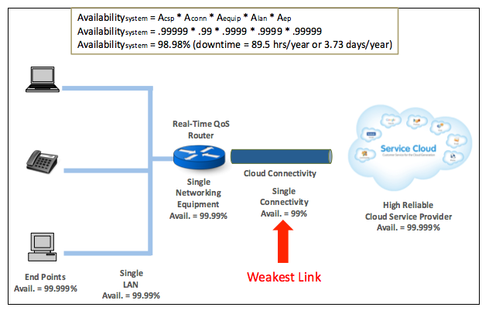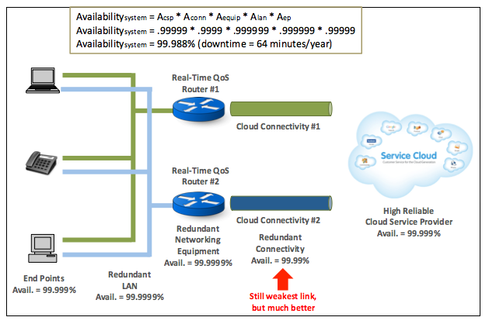You've taken the time to research, review, and select the right cloud service provider. So you're ready to move to the cloud... right? Not so fast! Deploying a cloud service is much more than figuring out which cloud service provider to use. There are many more components involved when deploying a cloud service that really have nothing to do with the cloud service provider itself. 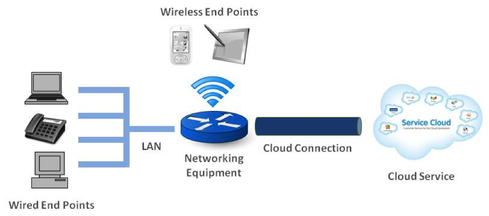
To begin with, you must consider all the above components. There are the cloud service, the cloud connection, the network equipment, the internal LAN, and end-point devices (desktops, mobile devices, IP phones, etc.). Each component affects the overall availability of the cloud service, as shown in the following mathematical equation:

n = the number of serial sub-components in the system
MTBF = mean time between failure
MTTR = mean time to repair
Looks confusing, right? It definitely can be, but this equation is crucial to the success of migrating to the cloud. In this case, there are five basic subcomponents to a cloud service. The key to availability is to examine the weakest link, not the strongest. Overall system availability will be lower than the subcomponent with the lowest availability value. Let's take a closer look at each component.
The cloud connection is the weakest link. We've all heard about the benefits of moving to the cloud, but those benefits can't happen without a solid connection to the cloud service itself. This connection is as important -- if not more important -- than the cloud service itself. If that connection goes down, your cloud service effectively goes down.
Unfortunately, today, most cloud service providers do not provide or support the cloud connection that delivers their service. This means you must find, select, and depend on a different vendor to deliver your cloud connectivity. It pays to spend time researching this vendor, because it plays a critical role in the availability of the cloud service. Review service reliability records in your area, ask for customer references, and review the vendor's service level agreement (SLA) and support structure to see if they match your company's minimum requirements.
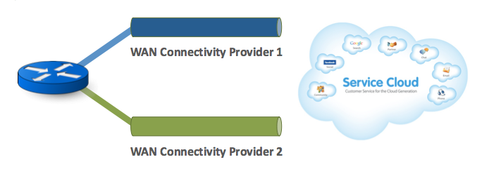
If your cloud service is business critical, strongly consider duplicating your cloud connectivity through two separate connectivity vendors and employing a network router that can handle WAN failover (described below). The availability of a redundant component is much higher than the individual availability of a single component:

Remember, with today's cloud data center technology, the cloud service itself has a lower probability of going down than the "last mile" cloud connection. Work on local utilities, weather events, and even building maintenance accidents all contribute to high connection failure rates. And when a connection fails, it typically takes hours and even days to get it back in operation.
Cloud service QoS depends on networking equipment. Once your cloud connectivity is addressed, focus on your networking equipment. Key to this component is the ability of the router to provide quality of service (QoS) routing and WAN connectivity failover capability. If your current router doesn't have these two capabilities, you should invest in a new router.
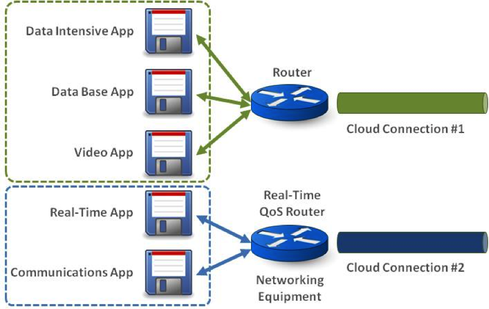
You can keep your old router as the data router while using the new QoS router to route any real-time applications through a dedicated separate cloud connection. Interconnect both connections to each router so that in the event of a cloud connection failure, the associated router can fail over to the other cloud connection to keep all services running.
Distribute the load through VLANs. VLANs allow you to group multiple LAN devices together into a single virtual LAN, making logical routing and device prioritization easier. Grouping like devices or devices that are accessing like applications will allow you to prioritize real-time applications over non-real-time applications. VLANs are configured in the network's router, so make sure you install a router that supports both VLANs and QoS capability.
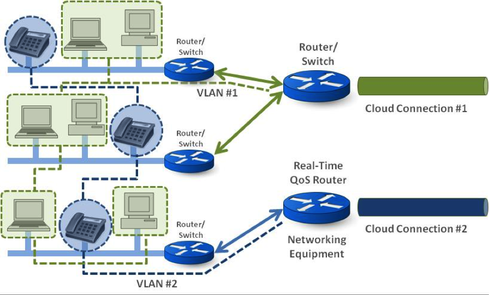
In addition, to increase network reliability, consider installing two separate networks with dual LAN ports at each desk. While the cost of installing dual LANs might be prohibitive, this will greatly increase the reliability of your LAN. If you have very many wireless devices, make sure you have redundant wireless routers installed as well.
End-points mingle corporate assets and BYOD. User end-points provide the actual access points to your cloud service. These points might be desktops, notebooks, tablets, smartphones or desk phones. Historically, corporations mandated and provided all the end-points. Today, the BYOD trend has become a mantra of the "millennial" generation and beyond. Whichever devices your users choose, make sure you test them for compatibility with your cloud service.

Making sure your cloud service interoperates with multiple end-point device types is important, because it can effectively provide end-point redundancy. If a single end-point fails, the user can switch to another end-point (such as from desktop to smartphone or tablet) and continue accessing the cloud service.
By evaluating and preparing all the components of your business for the deployment of cloud services, you can successfully transition your IT services without impacting user reliability and service availability. The difference between a well-prepared business and one that doesn't properly support a cloud service can be significant, as can be seen below. Preparing your business for cloud services ensures success!
Figure 1: Non-optimized business outage = 89.5 hrs/year
Figure 2: Optimized business outage = 1 hr/year













